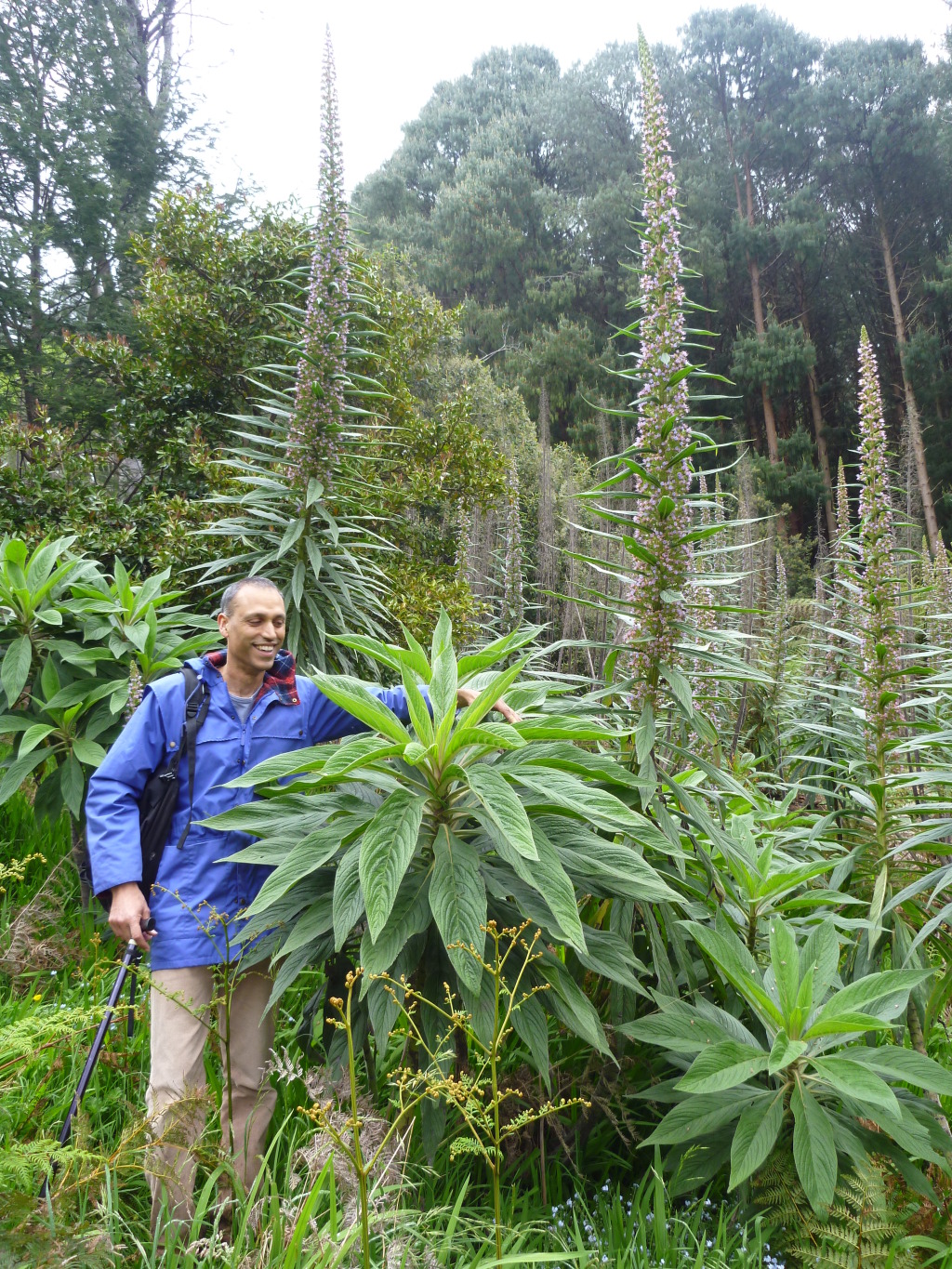Echium
Annual or perennial herbs or shrubs, mostly covered with coarse broad-based setae and often with short patent or appressed hairs. Rosette leaves crowded, petiolate, entire; cauline leaves alternate, widely spaced, sessile. Inflorescences terminal, of few–many simple monochasial scorpioid cymes; bracts present. Flowers sessile, in 2 rows; sepals 5, often unequal, connate at base, elongating with age; corolla zygomorphic to almost regular, 5-lobed, funnel-shaped, hairy outside, glabrous inside, often with scales near base of tube, throat open, lobes spreading; stamens inserted in corolla-tube or throat, anthers ellipsoid, on long filaments, some exserted beyond throat of corolla (in Victoria) or all included; ovary 4-lobed, 4-celled, style filiform, longer than stamens; stigma 2-lobed. Fruit splitting into 4 mericarps, often fewer by abortion, leaving a short, central gynobase; mericarps ovoid, beaked, inner surface ridged, densely tuberculate, attachment scar broad, basal.
About 40 species, from the Mediterranean, Europe, western Asia-Pacific and southern Africa; 4 species naturalised in Australia.
The robust biennial or perennial herb Echium italicum L. was reported by Willis (1973) as possibly being spontaneous in Victoria near the Murray River between Corowa and Albury, but no supporting specimens exist at MEL to substantiate this. It has been found very close to the Victorian border in both New South Wales and South Australia and its discovery in this State is to be anticipated. Similar in appearance to E. vulgare but more densely setose, with pale yellow or cream, virtually regular flowers, and 5 strongly exserted stamens.
Jeanes, J.A. (1999). Boraginaceae. In: Walsh, N.G.; Entwisle, T.J., Flora of Victoria Vol. 4, Cornaceae to Asteraceae, pp. 387–411. Inkata Press, Melbourne.
 Spinning
Spinning


